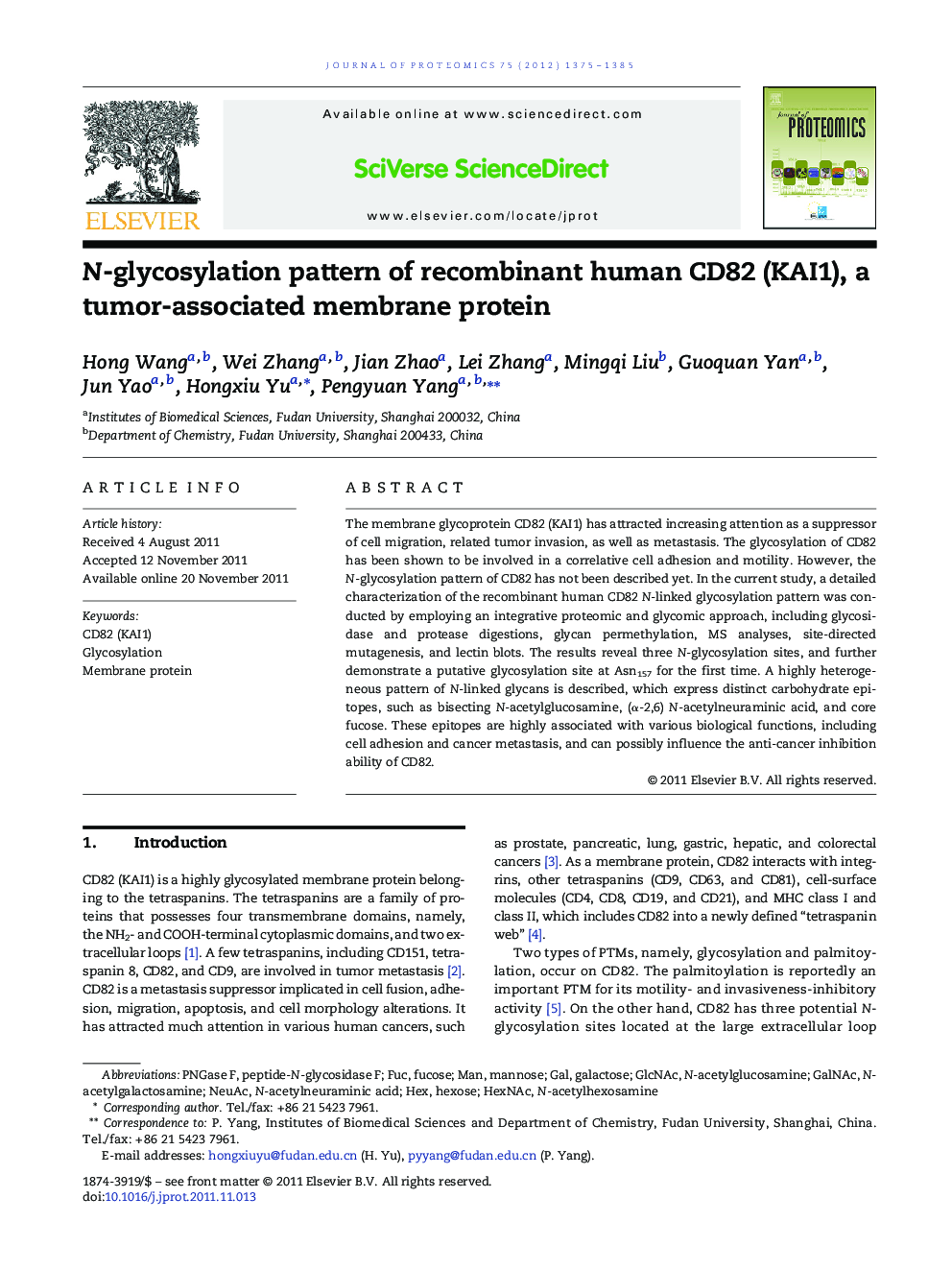| Article ID | Journal | Published Year | Pages | File Type |
|---|---|---|---|---|
| 1227036 | Journal of Proteomics | 2012 | 11 Pages |
The membrane glycoprotein CD82 (KAI1) has attracted increasing attention as a suppressor of cell migration, related tumor invasion, as well as metastasis. The glycosylation of CD82 has been shown to be involved in a correlative cell adhesion and motility. However, the N-glycosylation pattern of CD82 has not been described yet. In the current study, a detailed characterization of the recombinant human CD82 N-linked glycosylation pattern was conducted by employing an integrative proteomic and glycomic approach, including glycosidase and protease digestions, glycan permethylation, MS analyses, site-directed mutagenesis, and lectin blots. The results reveal three N-glycosylation sites, and further demonstrate a putative glycosylation site at Asn157 for the first time. A highly heterogeneous pattern of N-linked glycans is described, which express distinct carbohydrate epitopes, such as bisecting N-acetylglucosamine, (α-2,6) N-acetylneuraminic acid, and core fucose. These epitopes are highly associated with various biological functions, including cell adhesion and cancer metastasis, and can possibly influence the anti-cancer inhibition ability of CD82.
Graphical abstractFigure optionsDownload full-size imageDownload high-quality image (71 K)Download as PowerPoint slideHighlights► N-glycosylation of recombinant human CD82, a tumor-associated membrane protein, was analyzed. ► Three N-glycosylation sites were revealed, where Asn157 was demonstrated for the first time. ► 27 N-glycan structures were described for the first time. ► Some important carbohydrates including bisecting GlcNAc, NeuAc and core fucose were detected.
